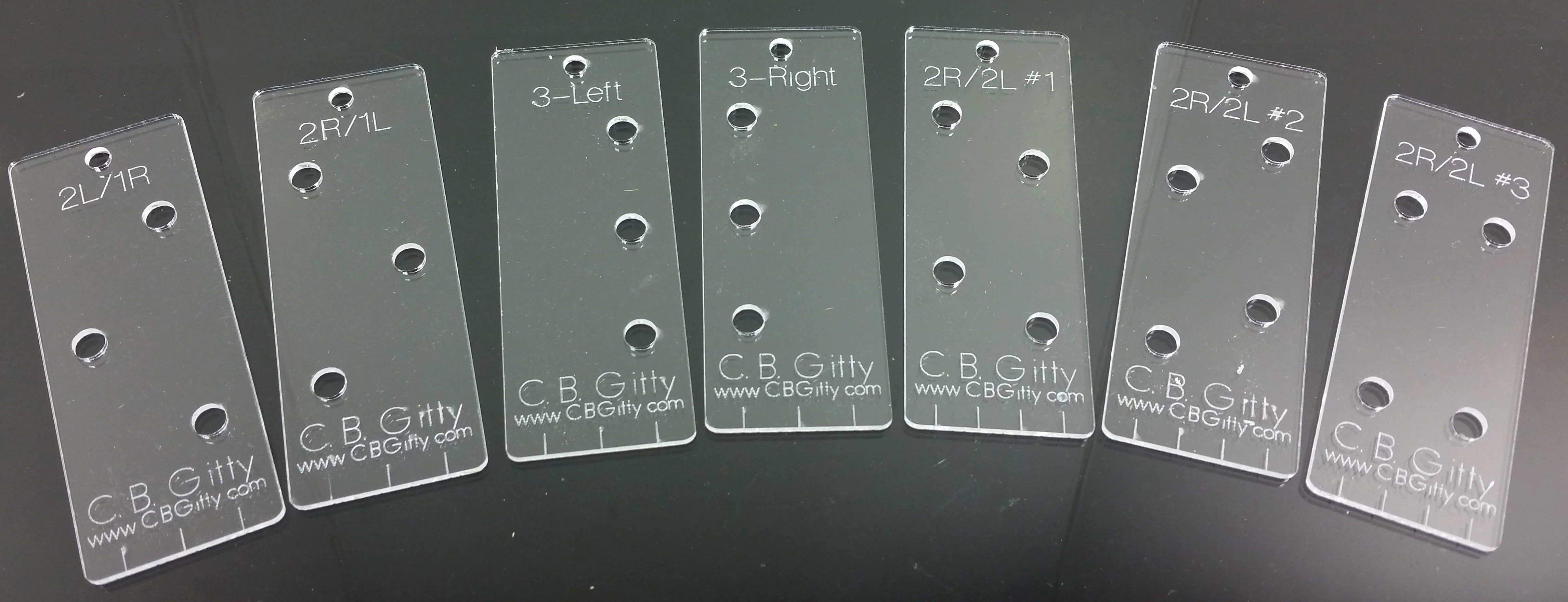Cigar Box Guitar Tuning Peg Drilling Templates: Quick, Accurate & Easy to Use
In this post, you'll learn how to quickly and accurately drill for cigar box guitar tuning pegs using C. B. Gitty headstock drilling templates for both 3 and 4-string CBGs.
We're going to go out onto a limb here and say that you don't like making mistakes on a cigar box guitar build. Moreover, you probably don't like the tedious parts of building, such as measuring for tuning peg locations on headstocks.
What if you could free up more time for creativity by quickly and accurately marking and drilling a wide variety of tuning peg locations on both 3 and 4-string builds with some easy-to-use templates? And what if those templates could do even more, such as outlining headstocks and optimizing string-spacing, while eliminating mistakes and frustration?
Keep reading to see how C. B. Gitty's 7pc. Cigar Box Guitar Headstock Drilling Templates will help you craft frustration-free headstocks with perfectly spaced tuning pegs.
Below you'll see a step-by-step guide for using C. B. Gitty's headstock drilling templates. The simple process illustrated here is for Gitty's Chrome Open-Gear Economy Tuners and the Shane Speal Signature Tuners.
However, these templates can be used for any of Gitty's tuning pegs. The only difference being that Gitty's sealed-gear tuners require a larger hole to be drilled and, unlike the open-gear tuners, don't require a countersunk hole for the tuner bushing.
Also, there is more than one way to use these templates. In the pictures below, you'll see how the templates are used to craft a straight and recessed headstock. But they can be used on cigar box guitar necks with a scarf joint headstock, too.
But enough of that. Let's unpack just how handy and easy it is to use these templates.
Remove Protective Film
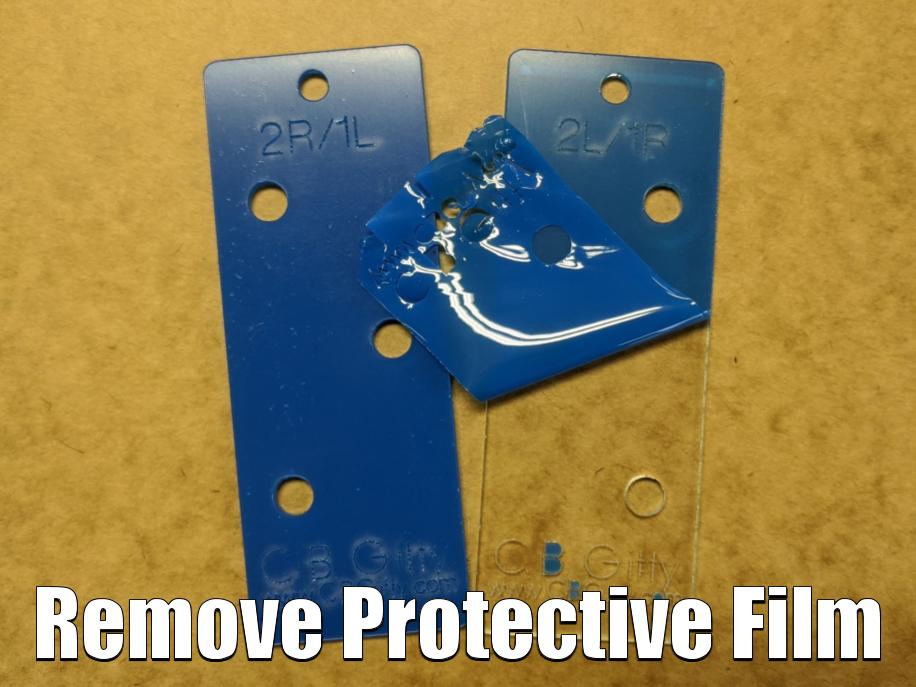
The clear, acrylic templates are covered in a protective, blue film. You can remove the film before using the templates.
Strike Line Across Template-Bottom
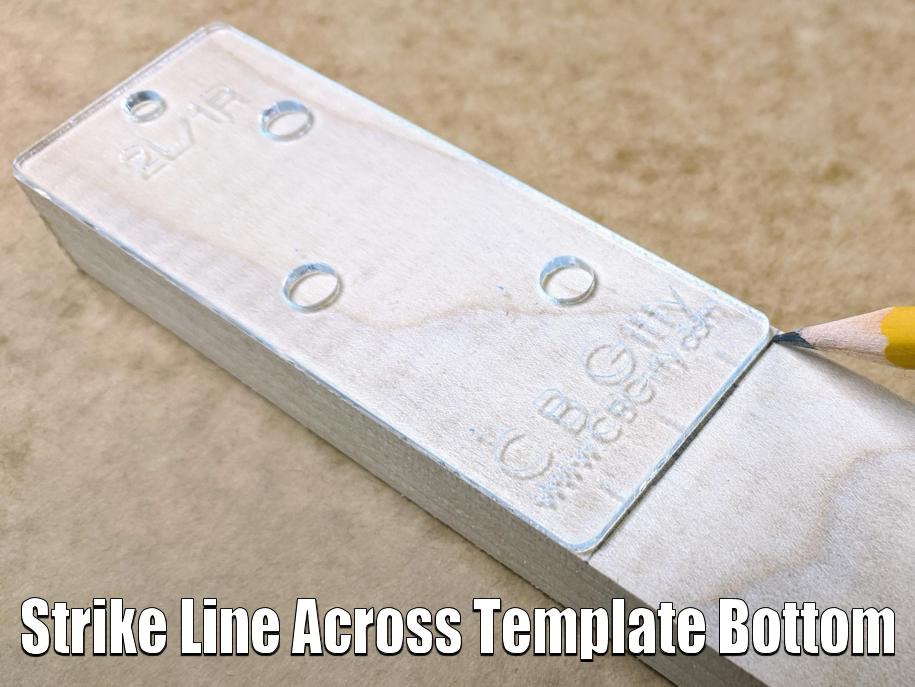
These templates are 1.5-inches wide (same as a standard 1 x 2-inch piece of lumber often used for cigar box guitar necks) and 4-inches tall, the perfect size for a cigar box guitar headstock.
If using the template to outline the entire headstock shape, align the template top with the top of the neck. Then, strike a line onto the neck across the template bottom.
Recess Headstock
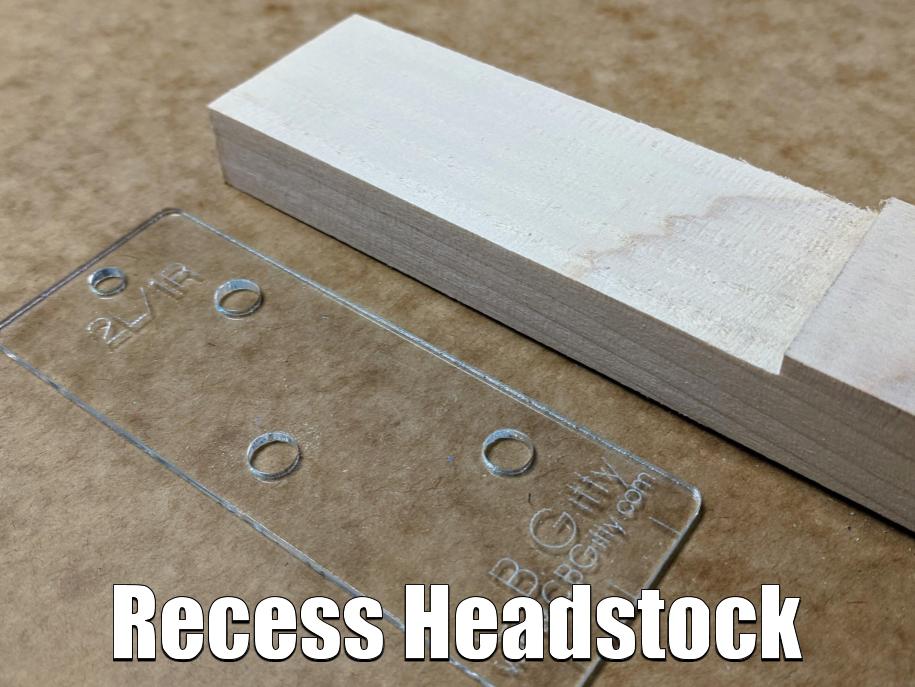
Remove the template and cut out the recess to the headstock using a technique favorable to you. Visit this How to Make a Cigar Box Guitar Headstock article to learn a tried-and-true method.
Trace Inside Tuning Peg Holes
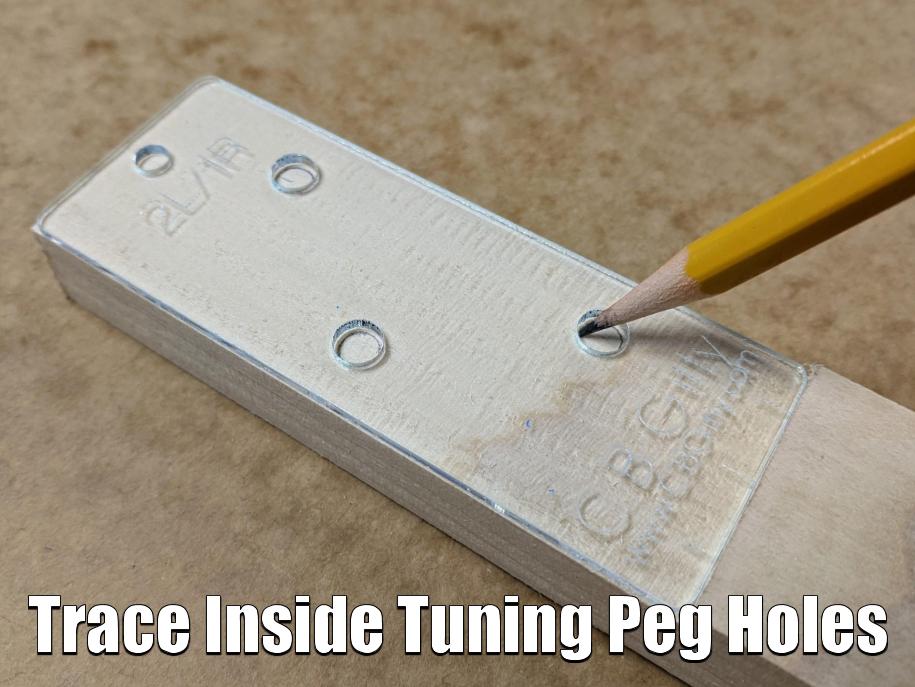
After making the cut-out, put the template into the recess. Use a pencil to trace the inside of the template tuning peg holes.
Mark Tuning Peg Hole-Centers
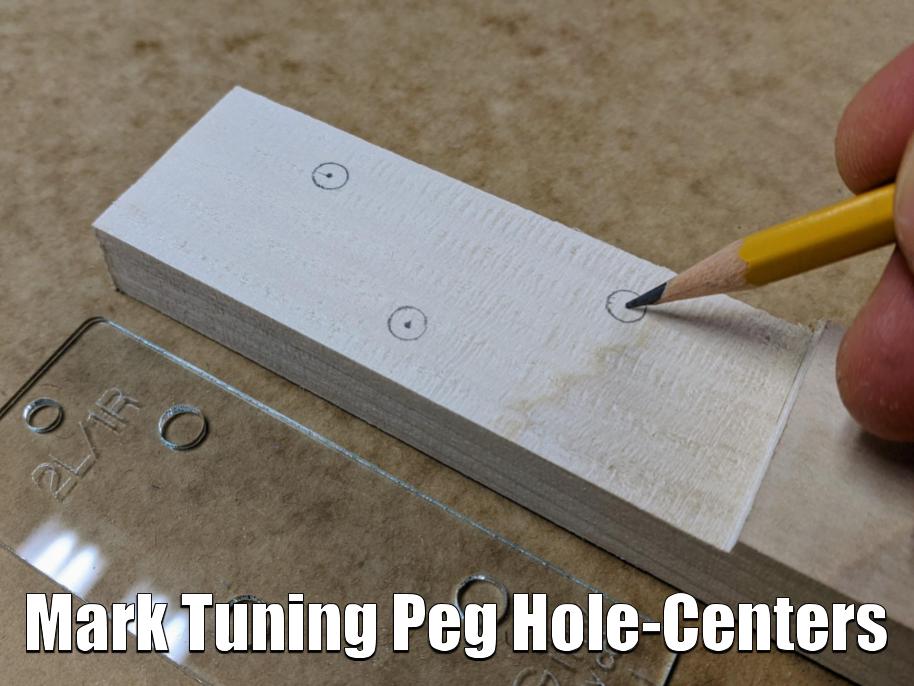
Remove the template from the headstock. Mark the center of each traced tuning peg circle.
Punch Drill Bit Pilot Holes
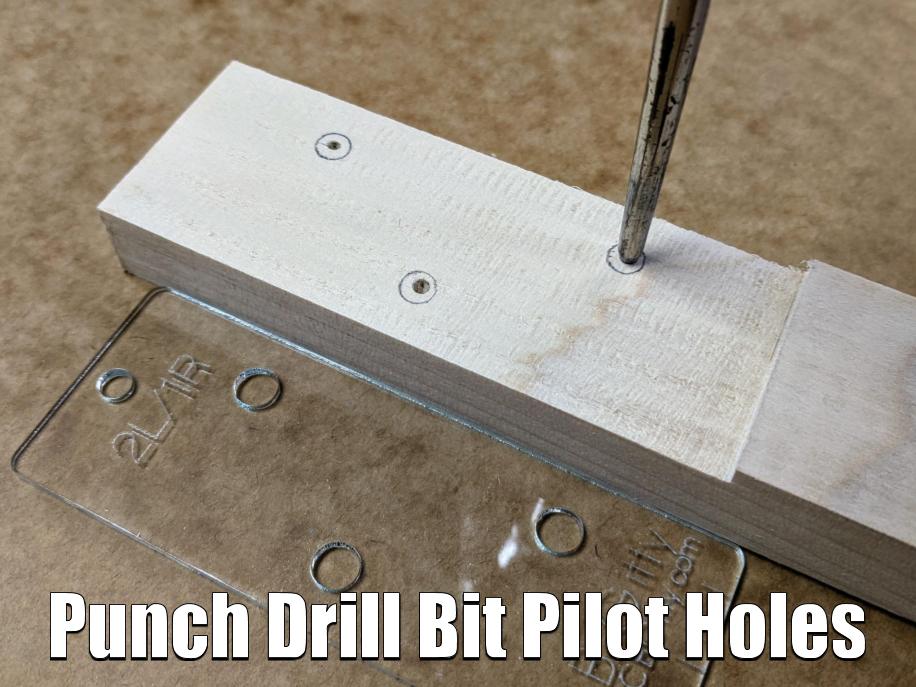
Use an awl, Phillips-head screwdriver, or other firm, pointy object to punch a hole into each center-mark. These punched locations serve as pilot-holes for the drill bit which prevent the bit from "walking" or moving off of the center-point as the bit enters the wood.
Drill Tuning Peg Holes
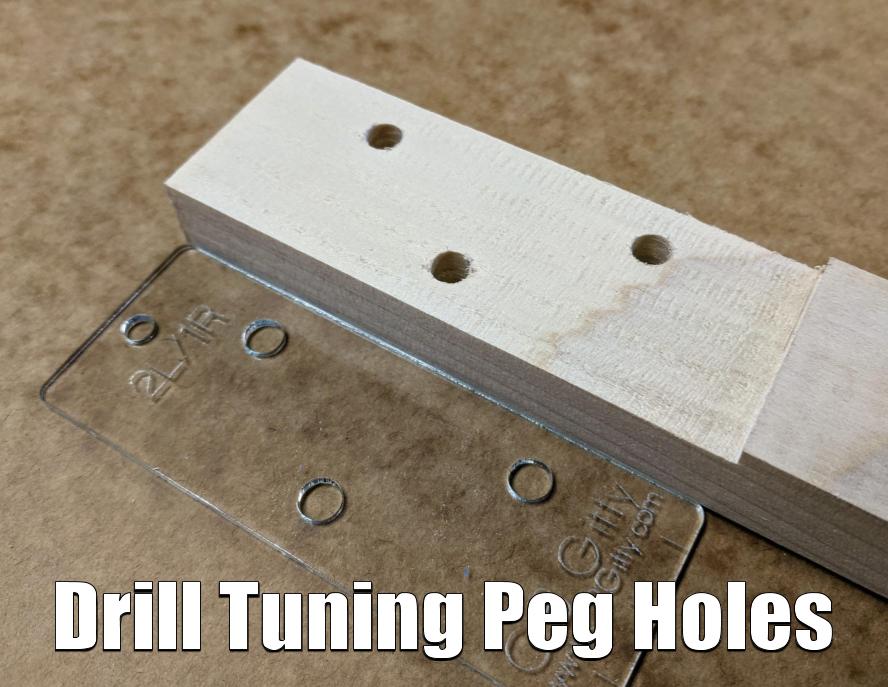
Drill holes at each tuning peg location. A 1/4-inch bit works well for the C. B. Gitty open-gear tuning pegs used in this post. A 25/64-inch bit works well for the various C. B. Gitty sealed-gear tuners.
Countersink for Tuning Peg Bushings
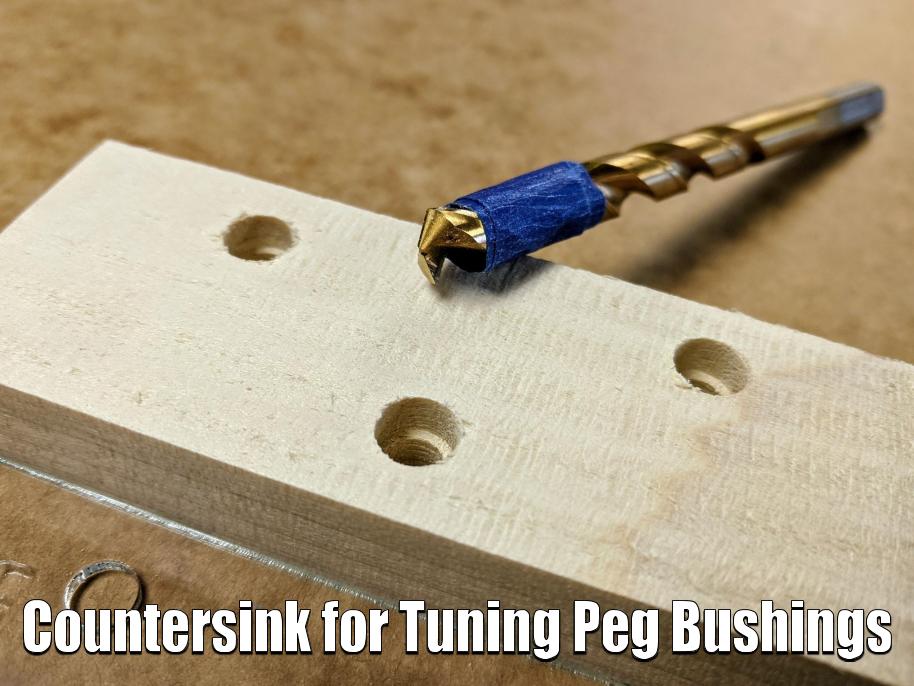
As you can see here in the How To Install Cigar Box Guitar Tuners article, a countersunk hole will need to be drilled if using the bushings that are included with the tuning pegs. Those bushings require a 5/16-inch hole. To countersink for the bushings, note in the image above that a piece of tape was used as a depth-gauge, exposing a length of the 5/16-inch drill bit equal to the height of the bushing.
As with all things cigar box guitar-related, there's more than one way to do this. Use a method for countersinking that is comfortable for you. For reference, check out another countersinking technique in the article on How To Drill For Cigar Box Guitar Tuner Bushings.
Bonus: Mark String Spacing
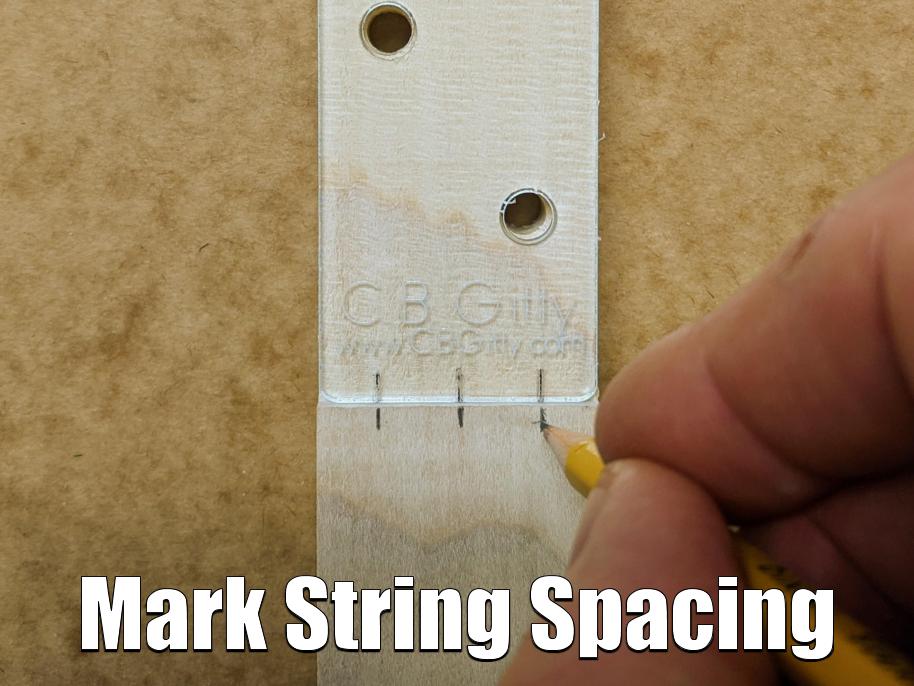
Aside from it's headstock outline-size and perfectly placed tuning peg locations, another great feature of these templates is that they offer suggested string spacing along the template bottom. Use the engraved suggestions to strike lines on the neck where you want your strings to line up over the nut.
Rear-View Tuning Peg Installation
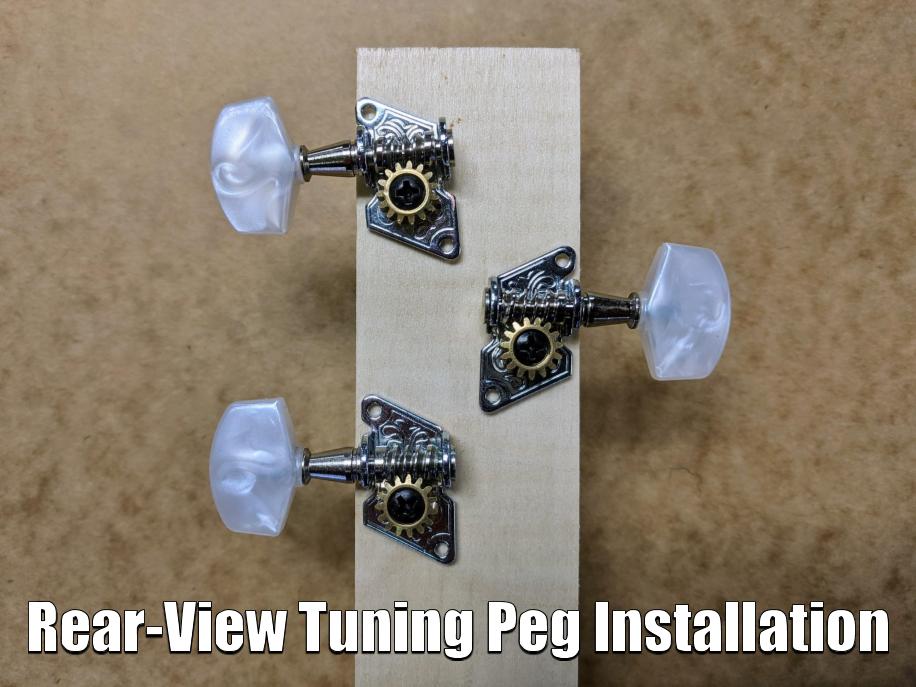
This is how two left and one right-hand tuners will look from the back of the headstock after using a C. B. Gitty headstock drilling template.
Front-View Tuning Peg Installation
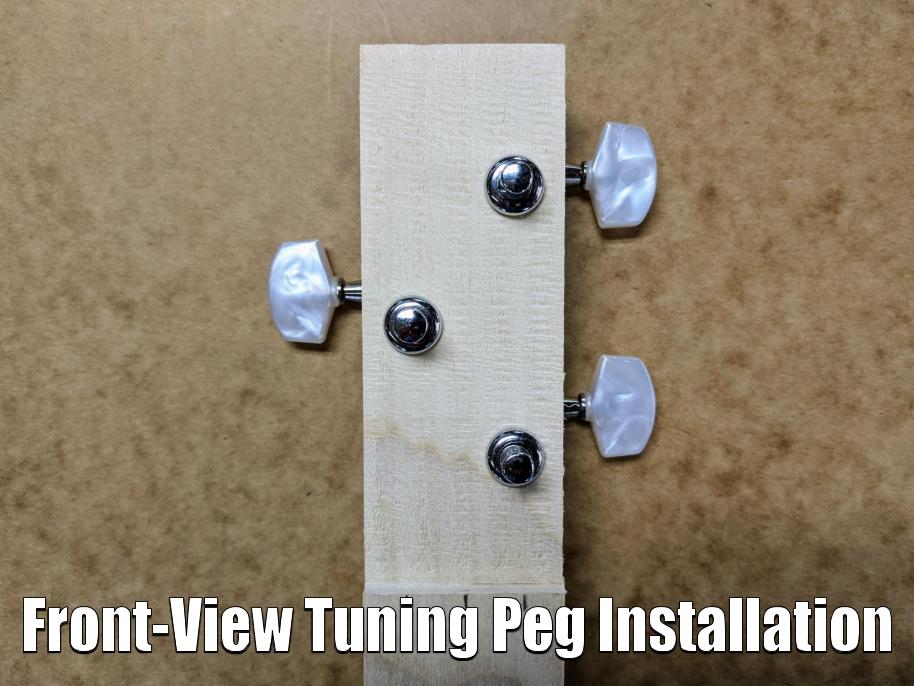
This is how two left and one right-hand tuners with installed bushings will look on the front of the headstock after using a C. B. Gitty headstock drilling template.
Conclusion
Gitty's headstock drilling templates are the best choice for quick and accurate cigar box guitar tuning peg locations. With them, you can eliminate the time it takes to measure for tuners and eliminate the the mistakes in marking their locations. Plus, with the perfectly-sized headstock outline and string spacing guides, these 3 and 4-string templates are a terrific addition to any quality-minded builder.
Get your own seven-piece drilling template set here.
Recent Posts
-
2024 World's Wildest Electric Cigar Box Guitar Build-Off Winners!!!
C. B. Gitty Crafter Supply is proud to announce the winners of the 2024 "World's Wildest Electric Ci …31st Oct 2024 -
Improved C. B. Gitty: Easier Than Ever! (Work in Progress)
Ben “Gitty” has been cleaning house, making our website even easier find your favorite parts, kits a …7th Oct 2024 -
Build-Off Contest 2024: The World's Wildest ELECTRIC Cigar Box Guitar
CBGitty.com is looking for the WILDEST, LOUDEST & MOST DIABOLICAL electric cigar box guitar ever …6th Sep 2024


